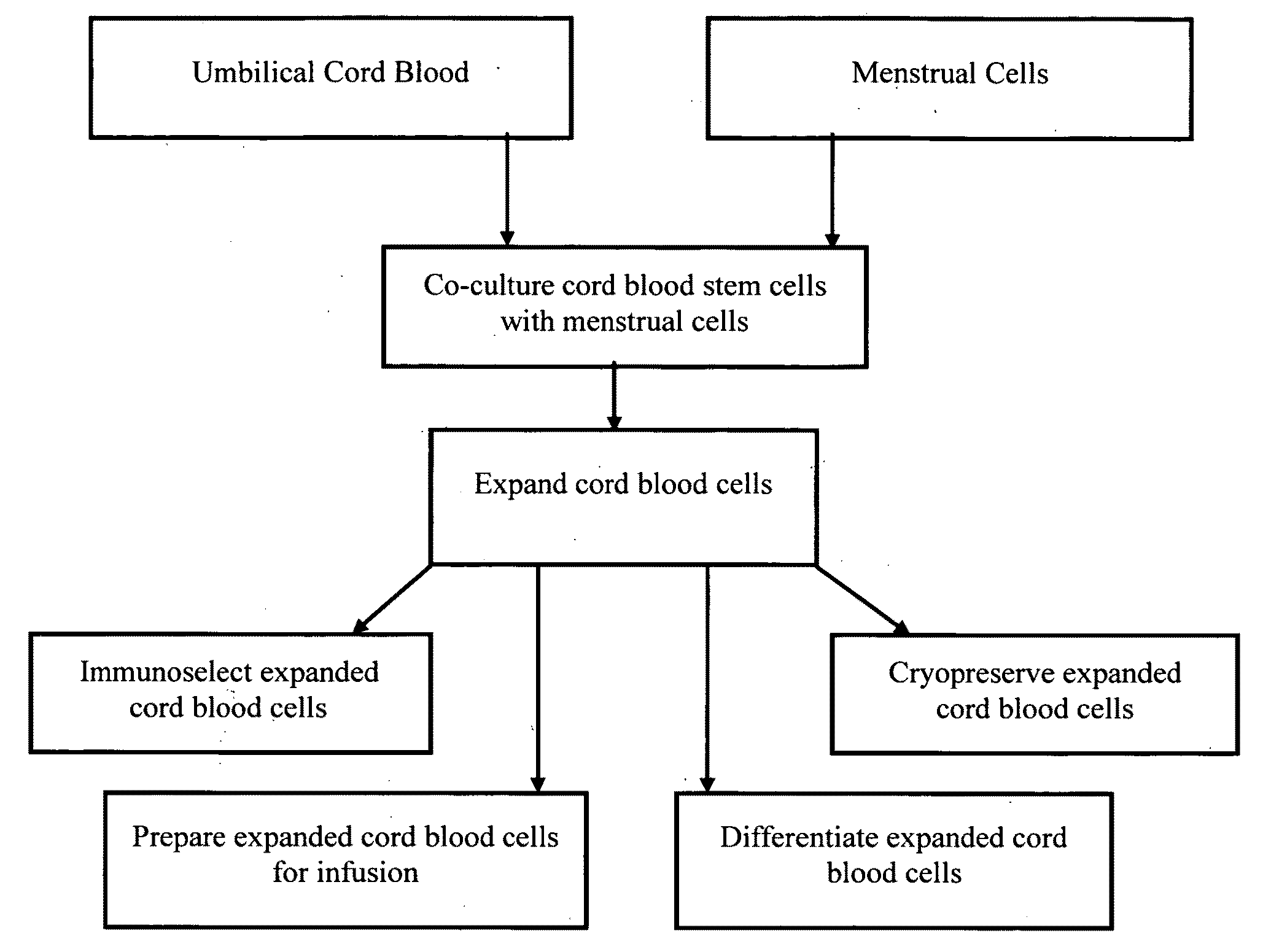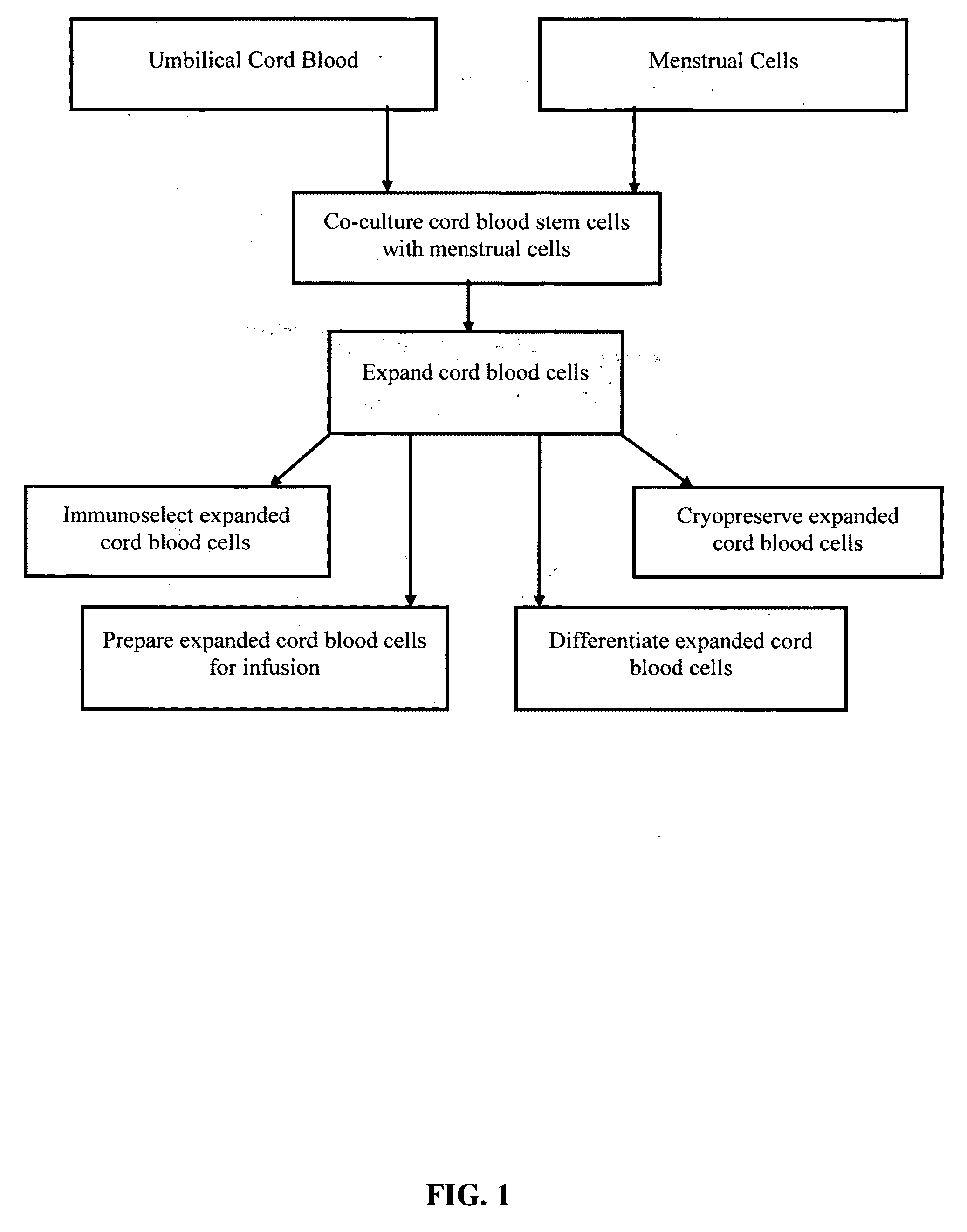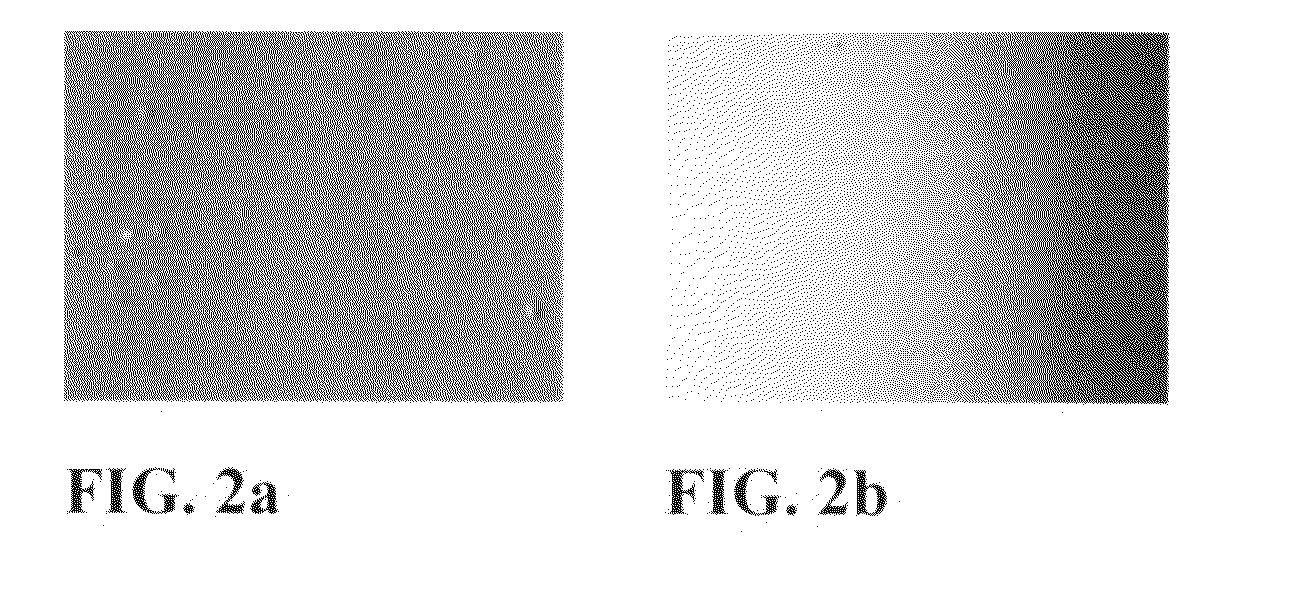Methods for co-culturing cord blood derived cells with menstrual stem cells
a cord blood and stem cell technology, applied in the field of human cell culture, can solve the problems of limited use of cord blood cells in human disorders, limited collection of cord blood cells, significant limitations on the number of times that umbilical cord blood may be collected, etc., and achieve the effect of improving the proliferation of cord blood cells
- Summary
- Abstract
- Description
- Claims
- Application Information
AI Technical Summary
Benefits of technology
Problems solved by technology
Method used
Image
Examples
example 1
Culture of Cord 871R
[0123]Cord blood cells 871R were collected according to the methods described in the application and used in the cord blood collection industry.
[0124]The cord blood sample for Cord 871R cells was processed about 2 days after collection and cryopreserved according to the processing and cryopreservation methods for cord blood described in this application. Cord 871R cells were held in cryopreservation for about two and a half years. Cord 871R cells were thawed according to the thawing methods described in this application.
[0125]Culture—Plate
[0126]About 3 ml of culture media (Methocult #4034—semi-solid media) was thawed at room temperature and then placed on ice for 15 minutes along with cord cell dilution (500,000 cells / mL). After 15 minutes about 0.3 ml of the cord cell dilution was inoculated into the tube of the culture media. The tube was gently vortexed and then incubated on ice for about 30 minutes. After incubation the culture media and Cord 871R cells were ...
example 2
Culture of M28100RM Menstrual Cells
[0130]Menstrual stem cells M28100RM were collected according to the methods of U.S. Patent Publication No. 20080241113 by collecting about 9 ml of menstrual flow and shipping it to a processing facility within about 24 hours to about 48 hours of collection in procurement media DPBS without antibiotics with calcium and magnesium, and preservation-free Heparin. The menstrual flow sample was incubated in antibiotics for 24 hours, and subsequently washed, concentrated through centrifugation, mixed with 10% DMSO cryopreservation agent, and cryopreserved according to the teachings of U.S. Patent Application Publication No. 20080241113.
[0131]The menstrual flow sample for M28100RM menstrual cells was processed and the M28100RM menstraul cells were cryopreserved about 2 days after collection. The cells were held in cryopreservation for about 8 months and then thawed for CFU according to the methods described in this application.
[0132]Culture—Plate
[0133]Thre...
example 3
Culture of M28101R
[0137]Menstrual stem cells M28100RM were collected according to the methods of U.S. Patent Publication No. 20080241113 by collecting about 9 ml of menstrual flow and shipping it to a processing facility within about 24 hours to about 48 hours of collection in procurement media DPBS without antibiotics with calcium and magnesium, and preservation-free Heparin. The menstrual flow sample was incubated in antibiotics for 24 hours, and subsequently washed, concentrated through centrifugation, mixed with 10% DMSO cryopreservation agent, and cryopreserved according to the teachings of U.S. Patent Application Publication No. 20080241113.
[0138]The menstrual flow for M28101R menstrual cells was processed after collection and cryopreserved according to the menstrual stem cell processing and cryopreservation methods described in this application about 3 days after collection. The cells were held in cryopleservation for about seven months. M28101R menstrual cells were thawed ac...
PUM
 Login to View More
Login to View More Abstract
Description
Claims
Application Information
 Login to View More
Login to View More - R&D
- Intellectual Property
- Life Sciences
- Materials
- Tech Scout
- Unparalleled Data Quality
- Higher Quality Content
- 60% Fewer Hallucinations
Browse by: Latest US Patents, China's latest patents, Technical Efficacy Thesaurus, Application Domain, Technology Topic, Popular Technical Reports.
© 2025 PatSnap. All rights reserved.Legal|Privacy policy|Modern Slavery Act Transparency Statement|Sitemap|About US| Contact US: help@patsnap.com



